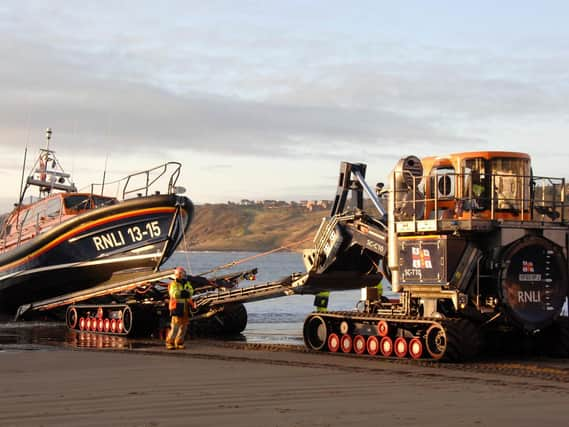Scarborough RNLI crew still carrying out rescues despite virus crisis


However, the 34m Alcedo BA77 scalloper was 4.8 metres deep so couldn’t be towed into the harbour at either Scarborough or Whitby.
The stricken vessel, built in Whitby and registered in Ballantrae, Scotland, was 15 miles east of Scarborough on a choppy sea.
Advertisement
Hide AdAdvertisement
Hide AdThe coastguard decided that the best course of action was to call a commercial recovery vessel to tow it to Teesside.
It was raining and pitch black at sea when the lifeboat launched at 3.50am. It was back home not long after sunrise, by which time the clouds had cleared to bright sunshine. As the Shannon was beached and recovered, another fishing vessel, the Fleetwood-registered Boy Christopher, put out to sea.
The lifeboat’s standard crew of six include the key roles of coxswain, navigator and mechanic, working to a rota. In accordance with guidelines on social distancing, the other volunteers who responded to their pager-alerts remained in their vehicles until chosen as crew. The rest were sent home.
The navigator was Wave Crookes, who was already planning to go to sea. Wave and his partner Laura Robinson, a professor of geochemistry, run a company called Seagrown which is developing an offshore seaweed and shellfish farm four miles south-east of the harbour.
Advertisement
Hide AdAdvertisement
Hide AdThey were going to check a new system for growing scallops in cages. But when Wave was on the lifeboat, he realised that the northerly swell which hit the coast at the weekend hadn’t gone, so they will go some other time
The mechanic was Kev Roberts, on his first shout since he qualified in the role. He said: “It was nice and smooth, with no trouble. Everything went as expected.”
All the training over the last year stood Kev in good stead, including three visits to the RNLI training centre in Poole and countless hours at the lifeboat station and at sea.
All RNLI trainees have to balance their COBT (Competency Based Training) units with practical experience. “You can read everything you need to know in books but at the end of the day you need to be able to apply it practically as well”, he said.
Advertisement
Hide AdAdvertisement
Hide AdKev’s work wasn’t finished when the lifeboat got back to to the lifeboat house. Because of the Covid-19 virus, everything inside the boat has to be thoroughly disinfected after a shout. “We clean with normal cleaner then we wipe everything down from top to bottom with disinfectant.”
The other boat crew were coxswain Lee Marton, Keith Eade, Mark Jenkinson and John Huntley. They were complemented by five shore crew: Tabz Nixon, John Kitto, Paul Huggins, Simon Loveland, John Wallis and Frank Wright.
Andy Volans, lifeboat operations manager, said: “Despite the current situation, the station is ready to respond to calls for help when required”.